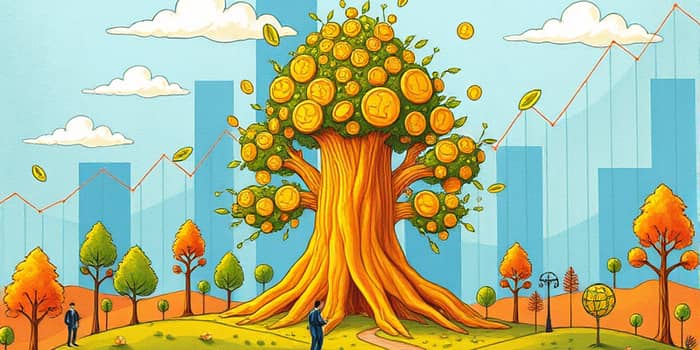
In the vast landscape of financial markets, market capitalization serves as a guiding compass for investors seeking to understand company scale, risk, and growth potential. By measuring the total value of a company’s stock, market cap unveils a narrative about corporate stature, stability, and the promise of tomorrow.
At its core, market capitalization (market cap) is the total value of a company’s outstanding shares of stock. It’s calculated with a simple formula:
Market Cap = Share Price × Shares Outstanding
For example, if a company has 1 million shares outstanding at $50 per share, its market cap is $50 million. This single metric transforms share price into a story of scale, revealing whether a company is a budding startup or a global powerhouse.
Investors categorize companies by market cap to compare businesses of similar scale. While exact thresholds may vary, the common classifications are laid out below:
Imagine a giant oak tree (mega-cap) beside mid-sized maples and young saplings (small-cap)—each has its unique role in the forest of investment opportunities.
Market cap isn’t just a label; it’s a window into risk and reward profiles. Understanding each segment helps investors build portfolios that resonate with their goals and temperament.
Many major stock indexes and funds rely on market cap to shape their composition. The S&P 500 tracks mega- and large-cap firms, weighting each by its market cap to reflect its influence on the economy. Meanwhile, the Russell 2000 focuses on small-cap names, offering a lens into the emerging and agile segments of the market.
For investors, this segmentation provides targeted exposure. Whether you’re seeking the stability of blue-chip giants or the dynamism of growth-focused small caps, mutual funds and ETFs can be tailored to your preferred market cap category.
While market cap reflects the equity value of a company, enterprise value (EV) paints a fuller picture by including debt and cash positions. For instance, a firm with a $10 billion market cap and $5 billion in debt has an EV of $15 billion. This metric is particularly important in mergers and acquisitions, where buyers assess the full cost of acquiring a company.
By comparing EV across peer groups, investors can uncover valuation discrepancies that market cap alone may obscure, adding depth to financial analysis.
Market cap is dynamic—shaped by corporate actions and the ebb and flow of share prices. Key drivers include:
These events can dramatically alter a company’s classification overnight, reminding us of the dynamic, daily fluctuations that define public markets.
How can you harness the power of market cap in your own portfolio? Begin by assessing your risk tolerance and investment horizon. A younger investor with a long-term outlook might allocate more to small- and mid-cap names, chasing growth. Conversely, a retiree may favor large- and mega-cap stocks for consistent dividend income and stability.
Next, use sector and industry analysis to complement market cap segmentation. Advanced analytics enable investors to dive deep into sub-industries and identify growth pockets before they become mainstream. By blending size-based classification with thematic insights, you can craft a portfolio that is both diversified and focused.
Finally, maintain discipline through periodic rebalancing. Market cap swings can skew your asset allocation—realigning holdings ensures you capture profits and stay aligned with your objectives.
Market capitalization is more than a number—it’s a narrative of scale, ambition, and potential. From the towering giants that shape global markets to the nimble innovators forging new paths, each category tells a story of risk, reward, and transformation.
As you explore this landscape, remember that knowledge is your greatest asset. Use market cap as a compass, guide your allocations with wisdom, and remain open to the evolving chapters of the financial world. In this journey, every investor has the opportunity to grow, adapt, and discover new horizons of success.
References













